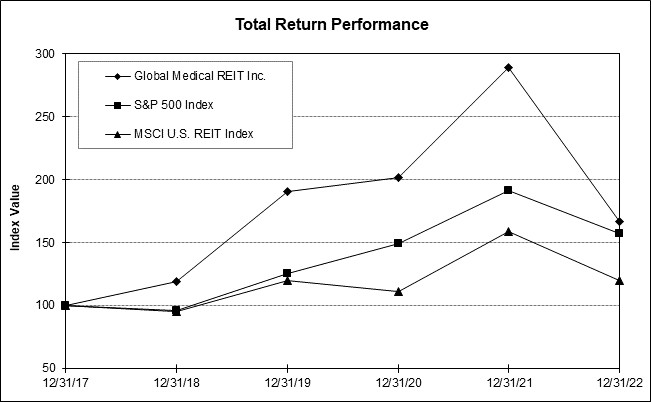Adverse economic or other conditions in our geographic markets could negatively affect our tenants’ ability to pay rent to us.
Adverse economic or other conditions in our geographic markets, including periods of economic slowdown or recession, industry slowdowns, periods of deflation, relocation of businesses, changing demographics, earthquakes and other natural disasters, fires, terrorist acts, public health crisis, pandemics and epidemics, such as the COVID-19 pandemic, and civil disturbances or acts of war and other man-made disasters which may result in uninsured or underinsured losses, and changes in tax, real estate, zoning and other laws and regulations, may negatively affect our tenants’ businesses and ability to pay rents to us and, therefore, could have a material adverse effect on our business, financial condition and results of operations, our ability to make distributions to our stockholders and the trading price of our common and preferred stock.
Most of our healthcare facilities are occupied by a single tenant, and we may have difficulty finding suitable replacement tenants in the event of a tenant default or non-renewal of our leases, especially for our healthcare facilities located in smaller markets.
As of December 31, 2022, leases representing 6.6%, 13.7% and 7.7% of our portfolio annualized base rent expire in 2023, 2024 and 2025, respectively. Most of our healthcare facilities are occupied by a single tenant. Following expiration of a lease term or if we exercise our right to replace a tenant in default, rental payments on the related healthcare facilities could decline or cease altogether while we reposition such healthcare facility with a suitable replacement tenant. We also might not be successful in identifying suitable replacement tenants or entering into triple-net leases with new tenants on a timely basis, on favorable terms, or at all. Additionally, we may be required to fund certain expenses and obligations (e.g., real estate taxes, debt costs and maintenance expenses) to preserve the value of, and avoid the imposition of liens on, our healthcare facilities while they are being repositioned. Our ability to reposition our healthcare facilities with a suitable tenant could be significantly delayed or limited by state licensing, receivership, CON or other laws, as well as by the Medicare and Medicaid change-of-ownership rules. We could also incur substantial additional expenses in connection with any licensing, receivership or change-of-ownership proceedings. In addition, our ability to locate suitable replacement tenants could be impaired by the specialized healthcare uses or contractual restrictions on use of the healthcare facilities, and we may be required to spend substantial amounts to adapt the healthcare facilities to other uses. Any such delays, limitations and expenses could adversely impact our ability to collect rent, obtain possession of leased healthcare facilities or otherwise exercise remedies for tenant default, which, in turn, could have a material adverse effect on our business, financial condition and results of operations, our ability to make distributions to our stockholders and the trading price of our common and preferred stock.
All of these risks may be greater in smaller markets, where there may be fewer potential replacement tenants, making it more difficult to replace tenants, especially for specialized space.
We have significant geographic concentration in a small number of states, including Texas, Florida, Ohio, Oklahoma, Pennsylvania, Arizona, and Illinois. Economic and other conditions that negatively affect those states and our tenants in those states could have a greater effect on our revenues than if our properties were more geographically diverse.
As of December 31, 2022, approximately 18%, 10%, 8%, 6%, 6%, 6% and 6% of our total annualized base rent was derived from properties located in Texas, Florida, Ohio, Oklahoma, Pennsylvania, Arizona, and Illinois, respectively. As a result of this geographic concentration, we are particularly exposed to downturns in these states’ economies or other changes in local real estate market conditions. Any material changes in the current payment programs or regulatory, economic, environmental or competitive conditions in these states could have an amplified effect on our business, financial condition and results of operations, our ability to make distributions to our stockholders and the trading price of our common and preferred stock than if our properties were more geographically diverse.
